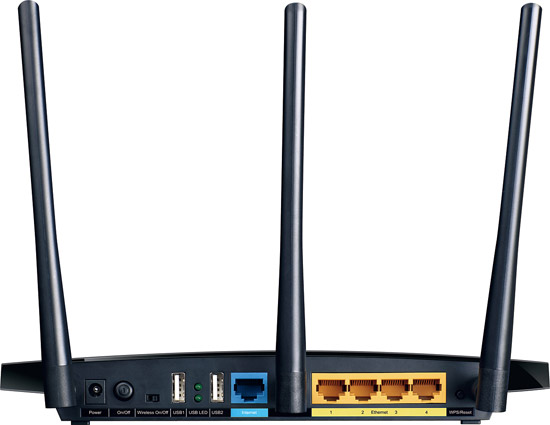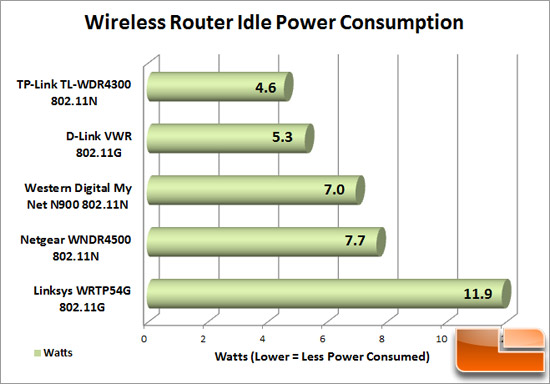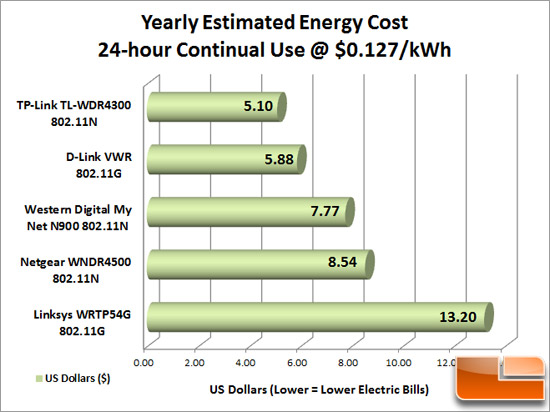TP-Link TL-WDR4300 N750 Dual-Band Wireless Router Review
TP-Link N750 Power Consumption

Since power consumption is a pretty big deal these days, we wanted to run some simple power consumption tests on the various routers that we had. To measure idle usage, we reset each wireless router to the default settings and plugged them with no devices connected to them. We then measured the power draw from each router at the wall with our P3 International P4400 Kill-A-Watt electric usage monitor.

Benchmark Results: As you can see the TP-Link TL-WDR4300 N750 router is one of the most energy efficient devices we have in our router arsenal.
Since most people will have their routers turned on for 24-hour a day operation, we think that examining power usage is an important benchmark. Total cost of ownership (TCO) is an important financial estimate that helps consumers direct and indirect costs of a product. In our TCO calculation we will be figuring up how much it costs to have a wireless router running per year in an idle state with the unit being installed 24-hours a day. We will be using 12.7 cents per kilowatt-hour (kWh) based on the bureau of labor statistics report from April 2012 showing that amount as the national average.

Benchmark Results: As you can see it costs you between $5 and $13 per year just to have your wireless router plugged in. The amount of money saved with this router over an older Linksys WRTP54G – or even a recently released Netgear WNDR4500 is pretty staggering when you look at the percentages. Not only can you save money up front with the cost of the TP-Link TL-WDR4300 N750 router, but you will find over time there is a significant savings on your electric bill. Sure, it’s only a few bucks per year, but it all adds up.

Comments are closed.